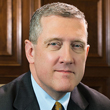Reflections on Crisis to Recovery
My 10-year anniversary as president and CEO of the Federal Reserve Bank of St. Louis seemed like an appropriate time to reflect on the lessons learned over this period, which has been anything but ordinary.This column is based on the St. Louis Fed’s latest annual report. See https://www.stlouisfed.org/annual-report/2017.
By the time I stepped into this role in April 2008, the financial crisis was already underway. The Federal Open Market Committee (FOMC) reacted by lowering the policy rate (i.e., the federal funds rate target) several times in late 2007 and early 2008. In March 2008, the rescue of Bear Stearns showed that the crisis had entered a new—and a more difficult—phase.
During the summer of 2008, there was still a case to be made that the U.S. economy would muddle through the crisis. However, the doubling of oil prices since the summer of 2007 contributed to slower economic growth during the second half of 2008. With the collapse of Lehman Brothers and AIG (American International Group) in September 2008, the crisis was in full swing.
In response, the FOMC lowered the policy rate further, hitting the so-called zero lower bound in December 2008. The rate remained near zero for seven years. In my view, the most important element of this whole era has been encountering the zero lower bound and then trying to decide what to do, if anything, given that interest rates could not be reduced further in response to poor economic conditions.
The crisis ultimately changed the nature of how we think about central banking and how a central bank should conduct monetary policy at the zero lower bound.
Against this backdrop, some of the key themes and policy positions over my first 10 years as St. Louis Fed president are briefly discussed below:
- The limits of fiscal policy: Once the policy rate hit the zero lower bound, calls for fiscal approaches to stabilization policy gained popularity. However, the FOMC was not out of ammunition; it turned to quantitative easing (QE) and forward guidance. In a 2012 paper, I argued that stabilization policy should be viewed the same way after the crisis as it was before—monetary policy should still be used to respond to short-term fluctuations in the economy.
- Fear of a deflationary trap: Many inflation measures were low and declining in 2010. During that summer, I released a paper that concluded the best course of action for turning inflation around—thus avoiding a Japanese-style deflation—was to implement QE. The FOMC implemented its QE2 program in November of that year.
- QE3—data-driven, not date-driven: As early as 2009, I had advocated for balance sheet policy to be state-contingent and adjusted depending on economic conditions.State-contingent policy means reacting to economic events and not doing things according to the calendar. While QE1 and QE2 were associated with fixed end dates, the FOMC’s QE3 program was open-ended—a form of state contingency. The end of QE3 depended on certain labor market conditions being met.
- A preferred approach to normalization: Monetary policy normalization began in December 2015 with "liftoff" of the policy rate. The FOMC chose to raise the policy rate before starting to shrink the balance sheet, but I favored the opposite sequence—a last-in, first-out approach. Choosing liftoff first has forced the FOMC to raise the policy rate in a world of superabundant reserves, causing the Fed to adopt new operating procedures for raising interest rates.
- A regime-based view of the economy: At the St. Louis Fed, we changed our approach to near-term forecasts of the macroeconomy and monetary policy in June 2016. We now assume the macroeconomy could switch between regimes (or steady states) and, therefore, could have a set of possible long-run outcomes. Projections for monetary policy are calibrated for the current regime.
- A push for more transparency: Improving Fed communications became a central focus of the FOMC during and after the financial crisis. Still, more can be done. One such improvement, which Fed Chairman Jay Powell announced this month, is a press conference after every FOMC meetingThe new approach will begin in January 2019. rather than the current practice of after every other meeting. Another would be to replace the FOMC's Summary of Economic Projections with a quarterly monetary policy report that better explains the FOMC’s actions and projections on a regular basis.
- The road to an inflation target: The Fed lagged many other central banks in adopting an explicit inflation target. In early 2011, an ad hoc group of Federal Reserve bank presidents (five of us) drafted a one-page statement that not only would name an inflation target for the U.S. but would touch on other important issues. This proposed statement was similar to the one the FOMC adopted in January 2012.
- Alternatives to inflation targeting: Central banking around the world has been primarily focused on inflation targeting as a way to keep inflation low and stable. Alternative approaches such as price-level targeting and nominal GDP targeting could be an improvement on inflation targeting and may be a wave of the future in central banking.
Endnotes
- This column is based on the St. Louis Fed's latest annual report. See https://www.stlouisfed.org/annual-report/2017.
- State-contingent policy means reacting to economic events and not doing things according to the calendar.
- The new approach will begin in January 2019.
Views expressed in Regional Economist are not necessarily those of the St. Louis Fed or Federal Reserve System.
For the latest insights from our economists and other St. Louis Fed experts, visit On the Economy and subscribe.
Email Us


